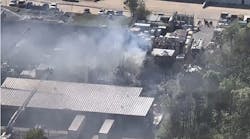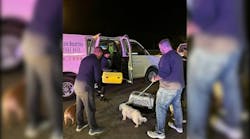AS PART OF OUR CONTINUING COMMITMENT to saving life and having mentioned organ donation last month, we recently received information from California regarding a free online training video, the first of its kind for first responders. Golden State Donors Services (GSDS) discovered that the vast majority of first responders in that state, and around the country, had received little or no training on organ donation. Up to eight lives can be saved by one potential donor. This is something many first responders don’t know. GSDS partnered with Folsom, CA, Fire Chief Dan Haverty, along with a committee of fire captains, paramedic and EMT trainers, and hospital staff, to develop the first training video of its kind in the nation. Go to www.donateLIFEcalifornia.org/firstresponders. Viewers receive one hour of continuing education credit. More than 110,000 people currently are waiting for a life-saving organ transplant in the United States. One-third of them will die due to a lack of donors.
FDNY Firefighter John Blake dropped off a few copies of the January issue of Firehouse® to Lieutenant Howard Carpluk’s former firehouses; you may recall that Lieutenant Carpluk died in the line of duty in 2006 when a floor collapsed. After reading about organ donations in the editorial, one firefighter asked, why doesn’t every firefighter in the nation sign up to become a donor?
One last thought on the subject – last year, we provided a booth at Firehouse Expo to have firefighters sign up to become bone-marrow donors. FDNY Firefighter Roy Chelsen, who became ill after working at the World Trade Center site, was in need of a bone-marrow transplant. All FDNY firefighters are registered when they come on the job. The idea was to register all firefighters nationwide. Numerous firefighters signed up at the booth last year. Sadly, Chelsen passed away recently from his illness, one of 18 from WTC-related illness. Rest in peace.
• • •
THE MOST IMPORTANT ITEM WE HAVE in the battle against the red devil is our personal protective equipment (PPE), provided it is worn properly and entirely. In this issue, we present part two of a Close Calls column that reports on a firefighter who suffered minor burns while he was rescuing a civilian and the room flashed over. The firefighter suffered minor burns because he was properly and entirely protected. Speaking of protection, this month we present a roundtable of PPE manufacturers who describe the state-of the-art products available today to protect first responders; see page 80.
• • •
ON THE TOPIC OF LEADERSHIP, we highlight several articles in this issue. Bill Clayton, a longtime wildland fire chief, and Dr. Jack Thorpe describe how military technology is being used to assist incident commanders with the most recent technology available. Tried and tested in war, this equipment is now being used in the urban wildland interface. Best-selling author and speaker Kimberly Alyn starts a new column, Leadership Lessons. Her classes at Firehouse conferences are sold out and those who attend learn from others’ mistakes. As members are promoted and take on new roles within the fire service, leadership becomes a vital topic in the chain of command.
Mark Emery reports on the importance of accountability on the fireground. This critically important function eliminates freelancing. It is hard enough to keep track of firefighters, civilians, incident command functions, working with other agencies and all the other interruptions that can occur on the fireground without having to figure out where a firefighter or firefighters are operating without permission. It is tough enough to control the part of the fire equation that you can control without something going wrong and not knowing where all personnel are operating. Only bad things can happen.
• • •
FOR COMMENTS AND SUGGESTIONS, please contact us at [email protected].





